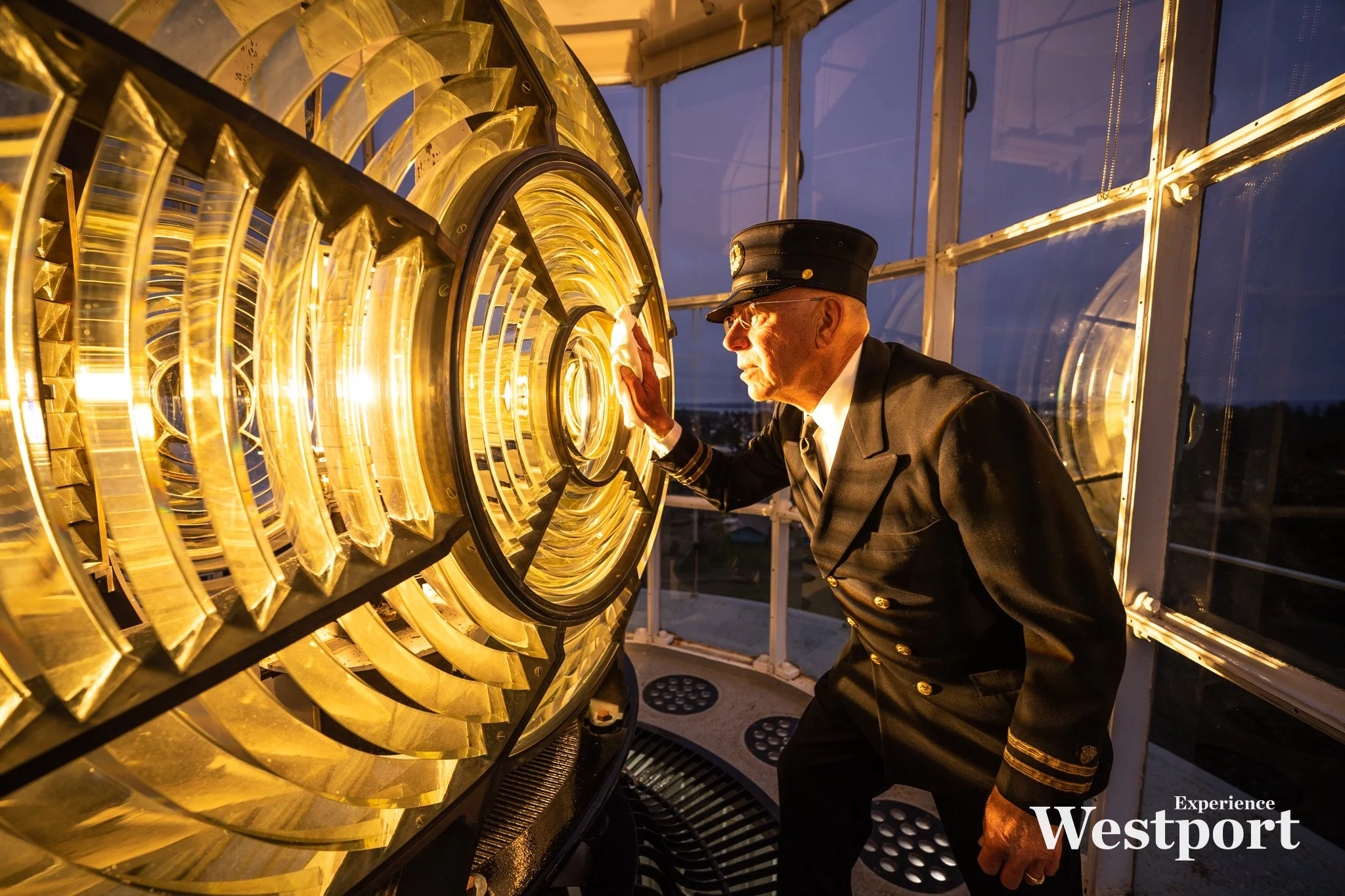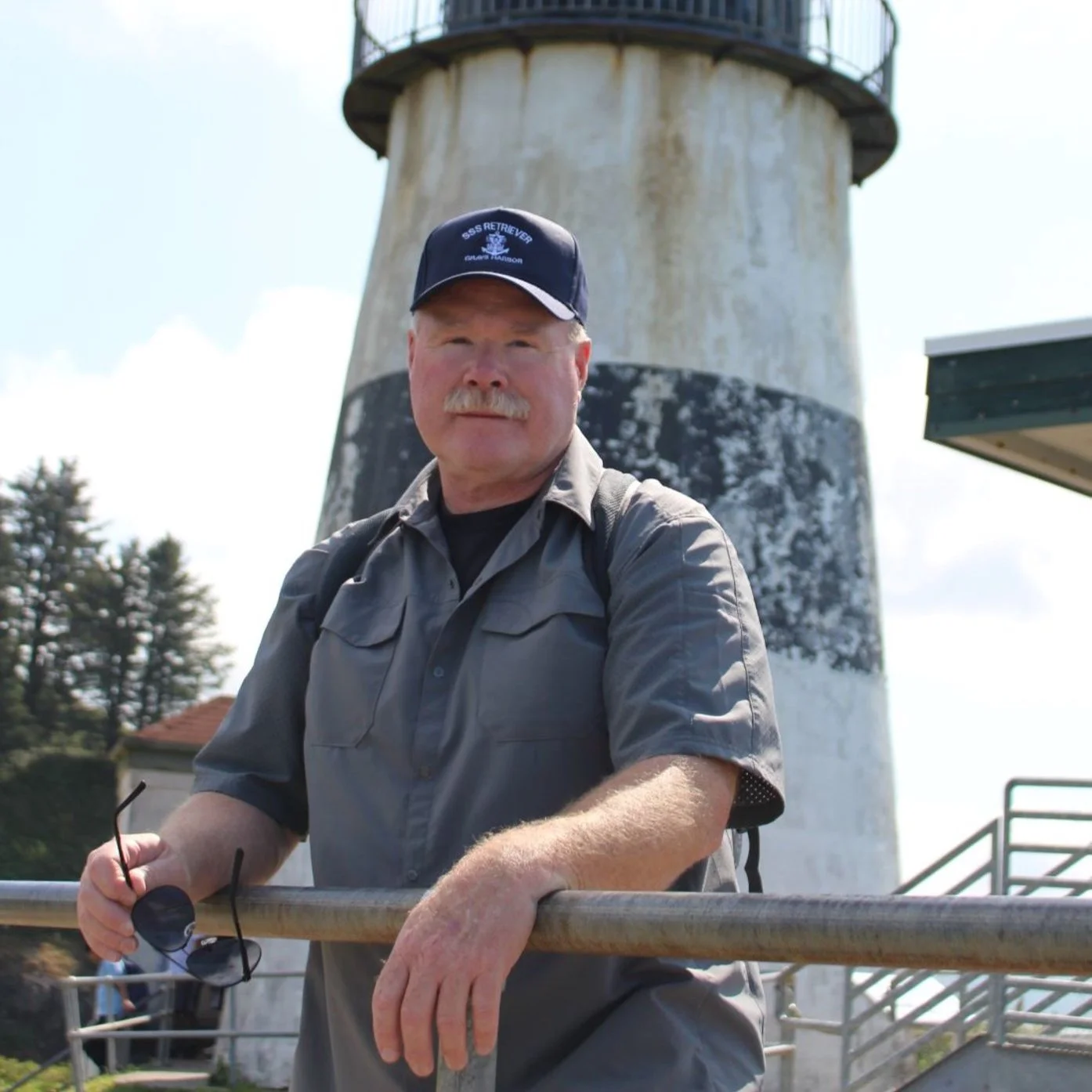Grays Harbor Lighthouse 125th Anniversary
June 30, 2023, is the 125th anniversary of the first lighting of the Grays Harbor Lighthouse in Westport, WA. The Grays Harbor Lighthouse is Washington's tallest and is considered the masterwork of noted lighthouse architect Carl W. Leick of the Pacific Coast's main chain lighthouses of the era. The Light is owned and operated by the Westport South Beach Historical Society, which maintains and makes the location available to the public.
The story of Grays Harbor's booming economy of the early 1900s starts with the first lighting and continues today as an active aid to navigation and a popular tourist destination. The Light ushered Grays Harbor into the 20th Century as an integral part of the shipping, lumber, and fishing industries. Join the Lighthouse Keepers on June 30 to celebrate 125 years of lighting the way to Grays Harbor.
A Light of National Significance
Grays Harbor Light Station is listed on the National Register of Historic Places. When the beacon was lit in 1898, it became the "principal aid to navigation" off Grays Harbor, which was one of the busiest ports on the West Coast, America's leading timber port, and, by 1905, the world's largest timber shipping port.
By the 1930s, the Grays Harbor Light also aided hundreds of smaller fishing and charter vessels that relied on the Light to keep their bearings.
Carl W. Leick, a master designer of light stations along thousands of miles of American coastline, designed the Grays Harbor Light. The Grays Harbor Lighthouse is considered by many to be Leick's "masterwork." At 107 feet, it is the tallest Lighthouse in Washington and the third tallest on the West Coast.
Maritime Commerce
In 1858, the citizens of Washington Territory asked Congress to fund a light at Grays Harbor. Congress appropriated $20,000 in 1859. However, the Civil War intervened. As soon as the war ended, territorial officials began reminding Congress of the need. When commercial logging began on the harbor in 1881, it increased sinkings and tragedies. The United States Light-House Board recommended that a light station be built on Point Chehalis at the Grays Harbor entrance. Earlier proposals had called for a light on the north side of Grays Harbor at Point Brown. But the Light-House Board focused on Point Chehalis at the south entrance to the harbor and finally settled on the current location about two miles southwest of the Grays Harbor entrance.
In 1884, Congress appropriated $15,000 for the Light. The Light-House Board said that more was needed, and Congress responded with a $60,000 appropriation for a true seacoast light. Carl
W. Leick completed plans for the Grays Harbor Light Station in 1896, and his plans were approved on October 16, 1896.
A groundbreaking celebration took place on August 23, 1897. The Reverend J.R. Thompson of Aberdeen laid the cornerstone. Contractors built a wagon road from docks on the east side of Chehalis Point so that building materials could be brought to the construction site. Vulcan Iron Works fabricated the ironwork and furnished the labor to install it. Contractor C.J. Erickson erected the tower. Reportedly, the unfinished lighthouse tower could be seen from Hoquiam.
Nearby, dwellings for the keeper and assistant keepers and outbuildings were constructed. Each dwelling boasted the convenience of a private outbuilding and a barn. A call bell system enabled communication between the keepers' houses and the Lighthouse. A wooden walkway connected the houses and Lighthouse.
About 50 feet directly west of the Lighthouse, at the edge of the frontal slope of the sand dune, the contractors erected a fog signal building, securing it with a 60 x 90-foot timber bulkhead. Steam generated by a coal-fired boiler powered the sirens. A water tower and windmill were built about 20 yards southeast of the Lighthouse.
Despite delays typical of the remoteness, the building contractor completed his work on March 26, 1898. The third-order Fresnel lens from France was also late but took its place in the "lantern" on June 10, 1898. Four days later, Christian Zauner, the first Grays Harbor Lighthouse keeper, arrived with his wife Hermine and two daughters.
On the evening of June 30, 1898, Thirteenth Lighthouse District officials, local dignitaries, and harbor residents gathered to dedicate and commission the Light.
A Beacon for 125 Years
Approaching Washington's dangerous coast through celestial navigation in an era before radio beacons and radar, mariners looked for lighthouses and fog signals to confirm their locations and to mark hazards such as reefs and shoals. Lighthouse authorities tried to place lights so that mariners in both large and small vessels could have two within sight simultaneously. Grays Harbor Light, its beacon visible seaward at a distance of 27 miles, provided an essential aid in a chain of lights stretching from Cape Disappointment at the mouth of the Columbia River to Cape Flattery at the entrance to the Strait of Juan de Fuca.
Imagine the blackness of the night at the turn of the 20th Century and how the beacon from Grays Harbor would have lit up the night sky and brought comfort and predictability to our coastal communities.
Grays Harbors First and Oldest Tourist Attraction
Keeping the lens turning and the beacon lit was an unrelenting responsibility. After extinguishing the oil lamp at daybreak, the keepers kept busy with maintenance such as the lens and lantern cleaning. From the very beginning, they also dealt with a constant stream of visitors. One keeper wrote to the Lighthouse Board asking that Sunday visiting hours begin only at noon.
Excursion boats, he noted, provided most lighthouse visitors, and they arrived at Westport at noon. He also observed that visitors should not be admitted on foggy or rainy days because of the mud and moisture they brought into the Lighthouse.
In the 1970s, the keepers' quarters were razed and replaced with family housing for Coast Guard personnel.
In 1992, the Fresnel lens was turned off, and an electronic beacon was mounted on the gallery outside the lantern. In 1998, the Coast Guard licensed the Westport-South Beach Historical Society to conduct interpretive tours. In 2004, the Coast Guard transferred ownership of the Lighthouse and the adjacent oil storage buildings to the society under provisions of the National Historic Lighthouse Historic Act of 2000.
About the Lens
The clamshell-shaped third-order Fresnel lens was manufactured in Paris, France, by Henri LePaute and Sons 120 years ago and went into service at the Grays Harbor Light Station in 1898. Its prisms lighted by a 1,000-watt quartz bulb with alternating red and white lights, could be seen nearly 20 miles out to sea.
In August of 1992, the lens, which rotated through the assistance of a no longer ecologically acceptable drum of mercury, was turned off and replaced by its current small Light manufactured in New Zealand. Permanently mounted to the west balcony railing, that small Light operates on a 35-watt bulb that can be seen up to 19 miles at sea on the white sector and 17 miles on the red, with the colors alternating at 15-second intervals.
Under the National Historic Lighthouse Preservation Act of 2000, ownership of the Grays Harbor Light Station on 2.2 acres north of Ocean Avenue was transferred in 2004 to the Westport South Beach Historical Society, which agreed to maintain the Lighthouse and make it available for public viewing.
Place of Sand
The Native American Chehalis people using their language and pronunciation named their traditional location and village (present-day Westport, Washington.) "Ts-a-lis" ("place of sand") or "Chi-ke-lis" ("shifting sands"). Early non-native explorers of the Pacific Northwest vocalized the words as "Chehalis" and proceeded to describe the original inhabitants as such.
The 107-foot (33m) Grays Harbor Lighthouse is the tallest Lighthouse in Washington and the third tallest on the West Coast. It marks the entrance to Grays Harbor, which is one of Washington's few outer-coast harbors, and was first lit in 1898. Construction began in 1897, using plans drawn up by architect Carl Leick at a site facing the Pacific Ocean about 2200 feet from the water's edge.
Massive amounts of accretion northwest of the Light have occurred due mainly to the jetty system at the entrance to Grays Harbor, which has since built up, and the Lighthouse now stands approximately 2,500 feet from an average high tide. Built on the original primary dune with a backdrop of large cedar and spruce trees, the Light faced an expanse of white sand accreted over thousands of years as part of the Columbia River littoral sediment cell.
The expanse of pine forest and European beach grass that has taken over the area starting in the mid-1970s has generally caused some confusion about the location of the Lighthouse today. The location of the Lighthouse is the same, it was never moved, as many visitors ask about, and the general distance to the average high tides is relatively the same as it was 125 years ago. Cyclical erosion and accretion cycles have occurred directly west of the Light, with significant accretion occurring to the north.
The base of the Lighthouse rests on a 12-foot-thick (3. m) foundation of sandstone. The lighthouse walls, which are four feet thick at the base, are made of brick with a coating of cement on the exterior. Originally windows lit the interior of the tower, but to cut down on maintenance, they were cemented over when electricity was added to the station. One hundred thirty-five (135) metal stairs bolted to the wall lead to the lantern room. In the late 1960s, the Coast Guard automated the Light. In 1977, the Lighthouse achieved its listing on the National Register of Historic Places.
Please join us on June 30 to celebrate Grays Harbor Lighthouse and 125 years of guiding people to our shores. The original clamshell-shaped third-order Fresnel lens will be illuminated on the evening of June 30 from 6 pm until 10 pm, and we will be offering free night tours to visitors.
Additionally, The Westport South Beach Historical Society offers tours of the Lighthouse year-round. You can climb the 135 steps leading up to the lantern room while learning about the Lighthouse's history and taking in a 360° view of Westport and the Pacific Ocean.
For more information, please visit www.wsbhs.org/lighthouse
John Shaw
About the Author
John Shaw is the Executive Director of the Westport South Beach Historical Society which operates the Westport Maritime Museum, Grays Harbor Lighthouse and the Furford Cranberry Museum.
He is a retired yacht builder with strong interests in Grays Harbors Maritime History. He also serves on Grays Harbors Marine Resource Committee and is Board Chair of the Aberdeen Museum of History.



